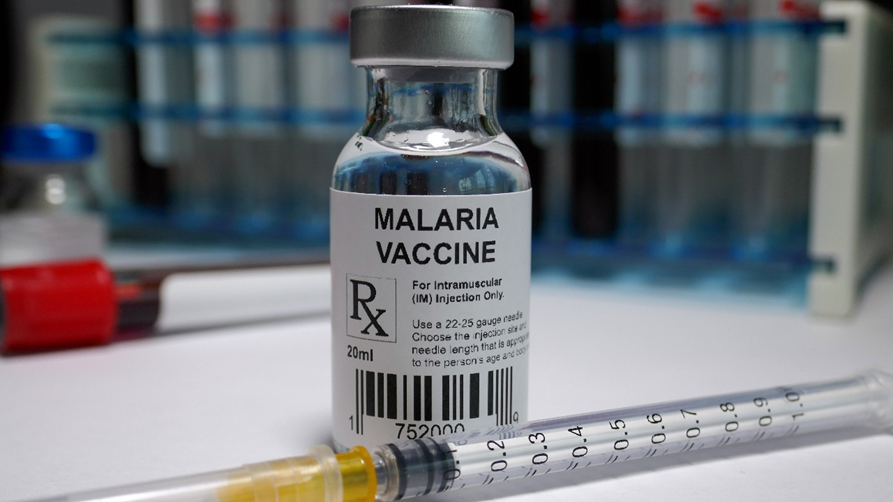mRNA MALARIA VACCINE

Copyright infringement not intended
Context: The Trans-Tasman research collaboration between Te Herenga Waka—Victoria University of Wellington’s Ferrier Research Institute in New Zealand, the Malaghan Institute of Medical Research in New Zealand, and the Peter Doherty Institute for Infection and Immunity in Australia has made a significant breakthrough in developing an mRNA-based vaccine against the malaria-causing parasite Plasmodium.
Details
- Malaria is a life-threatening disease caused by the Plasmodium parasite and transmitted to humans through the bite of infected female Anopheles mosquitoes. It remains a major global health problem, particularly in regions with warm climates, where mosquitoes thrive.
- According to the World Health Organization (WHO), there were an estimated 229 million cases of malaria and 409,000 malaria-related deaths worldwide in 2019. Developing an effective malaria vaccine has been a long-standing challenge, and existing preventive measures like bed nets and antimalarial drugs have limitations in controlling the disease.
Features of the mRNA-based Malaria Vaccine:
- The mRNA-based vaccine developed by the Trans-Tasman research collaborators has several notable features
mRNA Technology
- The vaccine uses messenger RNA (mRNA) technology, a relatively novel approach in vaccine development. mRNA vaccines work by introducing genetic material (mRNA) that encodes specific antigens of the target pathogen. In this case, the mRNA encodes antigens from the malaria-causing Plasmodium parasite.
Whole Malaria Protein
- Unlike traditional peptide-based vaccines that contain small protein fragments of the pathogen, this mRNA vaccine encodes an entire malaria protein. This enables the vaccine to generate a broader immune response, potentially leading to better protection.
Resident Memory Cells
- The vaccine is designed to stimulate the generation of resident memory cells in the liver, the primary site where the Plasmodium parasite develops and matures after entering the bloodstream. This targeted approach aims to prevent the parasite's further development, thereby stopping the spread of the infection.
Adjuvant Enhancement
- The vaccine is combined with an adjuvant developed for cancer immunotherapies at the Malaghan and Ferrier Institutes. This adjuvant helps stimulate liver-specific immune cells, enhancing the immune response at the site of infection.
Significance for global health
- Effective Malaria Prevention: A highly effective malaria vaccine would be a game-changer in the fight against malaria, potentially reducing the disease burden and saving countless lives.
- Broader Immune Response: The use of an entire malaria protein in the vaccine could lead to a more comprehensive immune response, offering broader protection against different strains of the parasite.
- Potential for Pre-Exposure Protection: The vaccine's ability to provide protection even in individuals previously exposed to malaria is promising, as this is a critical challenge faced by many malaria vaccines.
Challenges that need to be addressed
- Safety and Efficacy in Humans: The vaccine's safety and efficacy need to be thoroughly evaluated in human clinical trials to ensure it works as intended and does not cause any adverse effects.
- Scale-up and Distribution: If the vaccine proves successful in clinical trials, there will be a need for large-scale production and distribution to make it accessible to communities at risk of malaria.
- Cost and Accessibility: Ensuring the vaccine's affordability and accessibility, especially in low-income regions where malaria is prevalent, will be crucial for its widespread use.
Way Forward for the mRNA-based malaria vaccine
- Clinical Trials: The vaccine must undergo rigorous testing in human clinical trials to assess its safety, immunogenicity, and protective efficacy in a diverse population.
- Regulatory Approval: If the vaccine demonstrates safety and efficacy in clinical trials, it will need regulatory approval from relevant health authorities before being deployed for public use.
- Collaboration and Funding: Continued collaboration between research institutions, governments, international organizations, and pharmaceutical companies will be essential to support further research, development, and funding of the vaccine.
- Global Implementation: Once approved, efforts will be needed to ensure the vaccine's equitable distribution and accessibility to populations at risk of malaria worldwide.
Conclusion
- The development of an mRNA-based malaria vaccine by the Trans-Tasman research collaborators represents a significant breakthrough in the fight against malaria. However, further research, clinical trials, regulatory approvals, and global cooperation are necessary to realize its potential as an effective tool in malaria prevention.
Must Read Articles:
MALARIA VACCINE: https://www.iasgyan.in/daily-current-affairs/malaria-vaccine
Malaria: https://www.iasgyan.in/daily-current-affairs/malaria-42
|
PRACTICE QUESTION Q. Which of the following is true about RNA? 1. RNA stands for Ribonucleic Acid and contains deoxyribose sugar. 2. RNA is double-stranded and forms a double-helix structure like DNA. 3. RNA uses thymine as one of its bases. 4. RNA is involved in protein synthesis and gene regulation. How many of the above statements is/are correct? A) Only 1 B) Only 2 C) Only 3 D) All Answer: A Explanation: RNA is a type of nucleic acid that plays a vital role in many biological processes. RNA stands for Ribonucleic Acid and contains a ribose sugar, which is different from the deoxyribose sugar found in DNA. RNA is usually single-stranded, unlike DNA which is double-stranded and forms a double-helix structure. RNA also uses uracil as one of its bases, instead of thymine which is used by DNA. RNA is involved in protein synthesis and gene regulation, as it can carry genetic information from DNA to the ribosomes, where proteins are made or act as regulators of gene expression. The above paragraph explains some of the basic features of RNA. Based on this information, we can evaluate the statements given in the question and determine which of them are true or false. The statements are: 1. RNA stands for Ribonucleic Acid and contains deoxyribose sugar. (False) 2. RNA is double-stranded and forms a double-helix structure like DNA. (False) 3. RNA uses thymine as one of its bases. (False) 4. RNA is involved in protein synthesis and gene regulation. (True) Therefore, only one of the statements is correct, which is statement 4. |





1.png)
